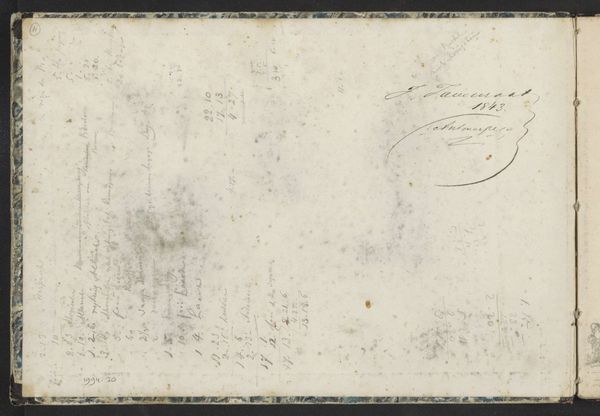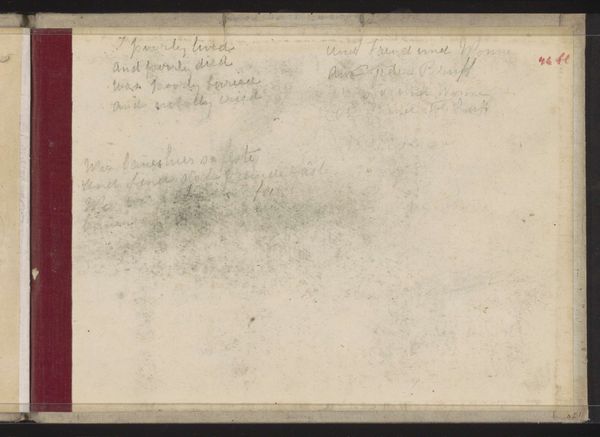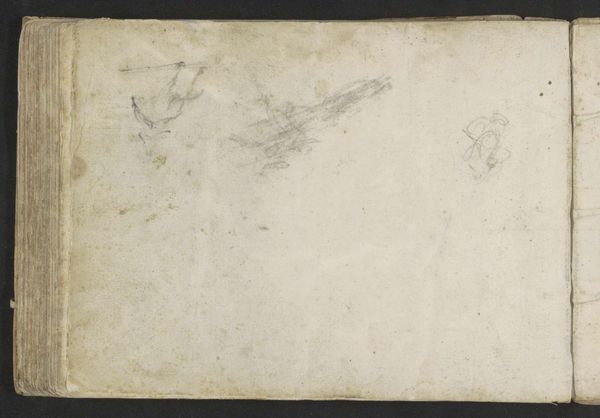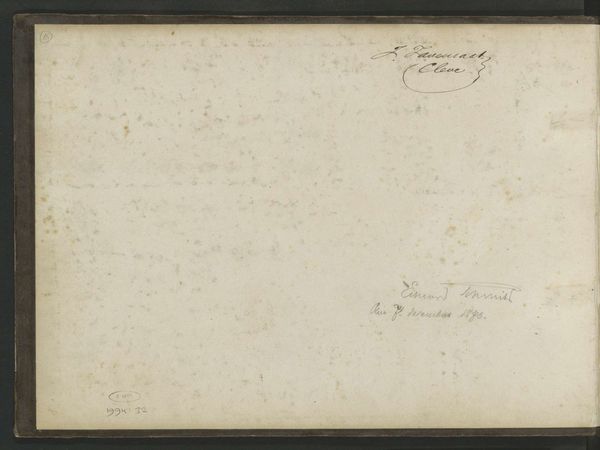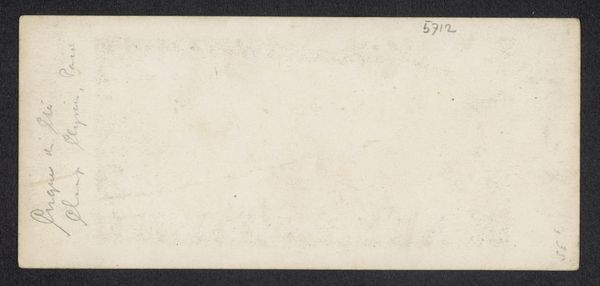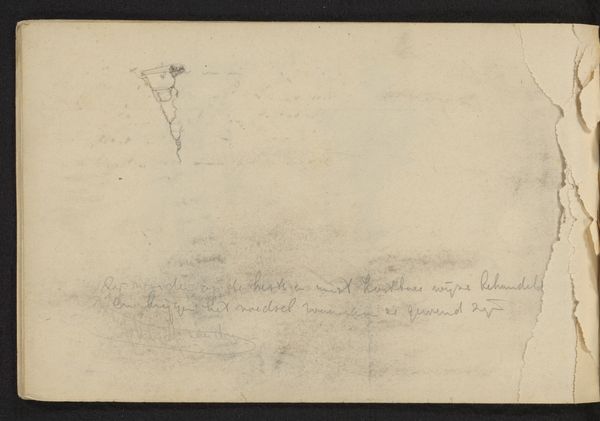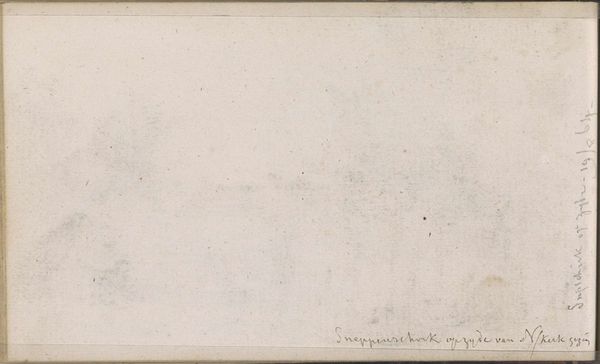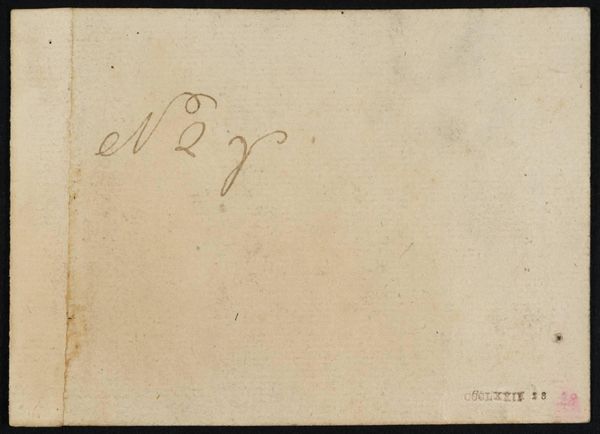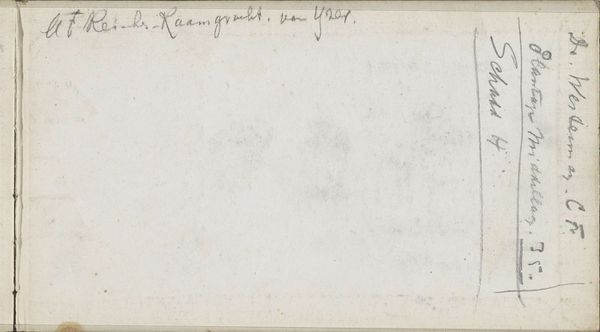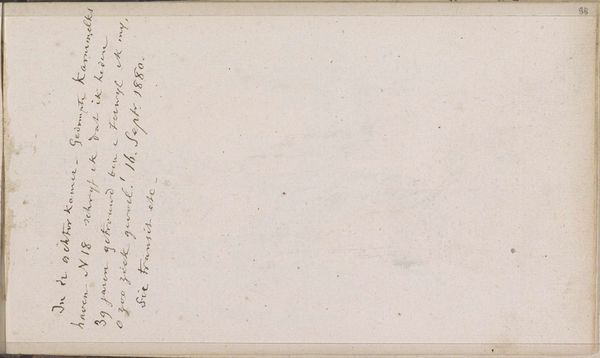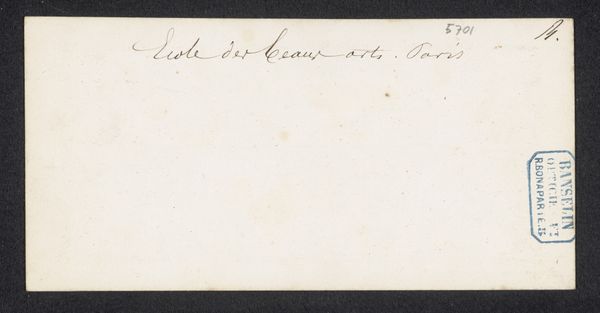
drawing, paper
#
drawing
#
dutch-golden-age
#
paper
#
calligraphy
Copyright: Rijks Museum: Open Domain
Editor: This is "Annotatie" by Gerard ter Borch the Younger, created around 1634-1635. It’s a drawing on paper, held at the Rijksmuseum. My first impression is that it’s a glimpse into a private world, maybe a ledger or notebook. What stories do you think these notations tell? Curator: It speaks volumes, doesn’t it? A seemingly simple sheet becomes a window into the culture of record-keeping and artistic practice in the Dutch Golden Age. Consider, for a moment, calligraphy as a symbolic art. How does the presence of handwritten notes, in a period of rising literacy, signify intellectual exchange and personal identity? Notice also, the casual blotches – do they symbolize something? Editor: I hadn’t thought of the blotches as being symbolic, I thought they were just, well, accidents! Do you see specific symbols in the script itself? Curator: Indeed, the specific letterforms, the slant of the writing, the density of the ink—all were imbued with the character of the writer. Handwriting itself carried significant weight. Also the fading; doesn’t it conjure a sense of time's passage? How we rely on it while its symbols slowly become arcane... Editor: That's fascinating. It makes me think about how future generations might interpret *our* digital notes, and what those symbols will say about us. Thanks, I never would have considered it in this way! Curator: Precisely. These simple inscriptions become powerful markers of cultural memory. Perhaps a window into what really mattered to them as a generation.
Comments
No comments
Be the first to comment and join the conversation on the ultimate creative platform.
